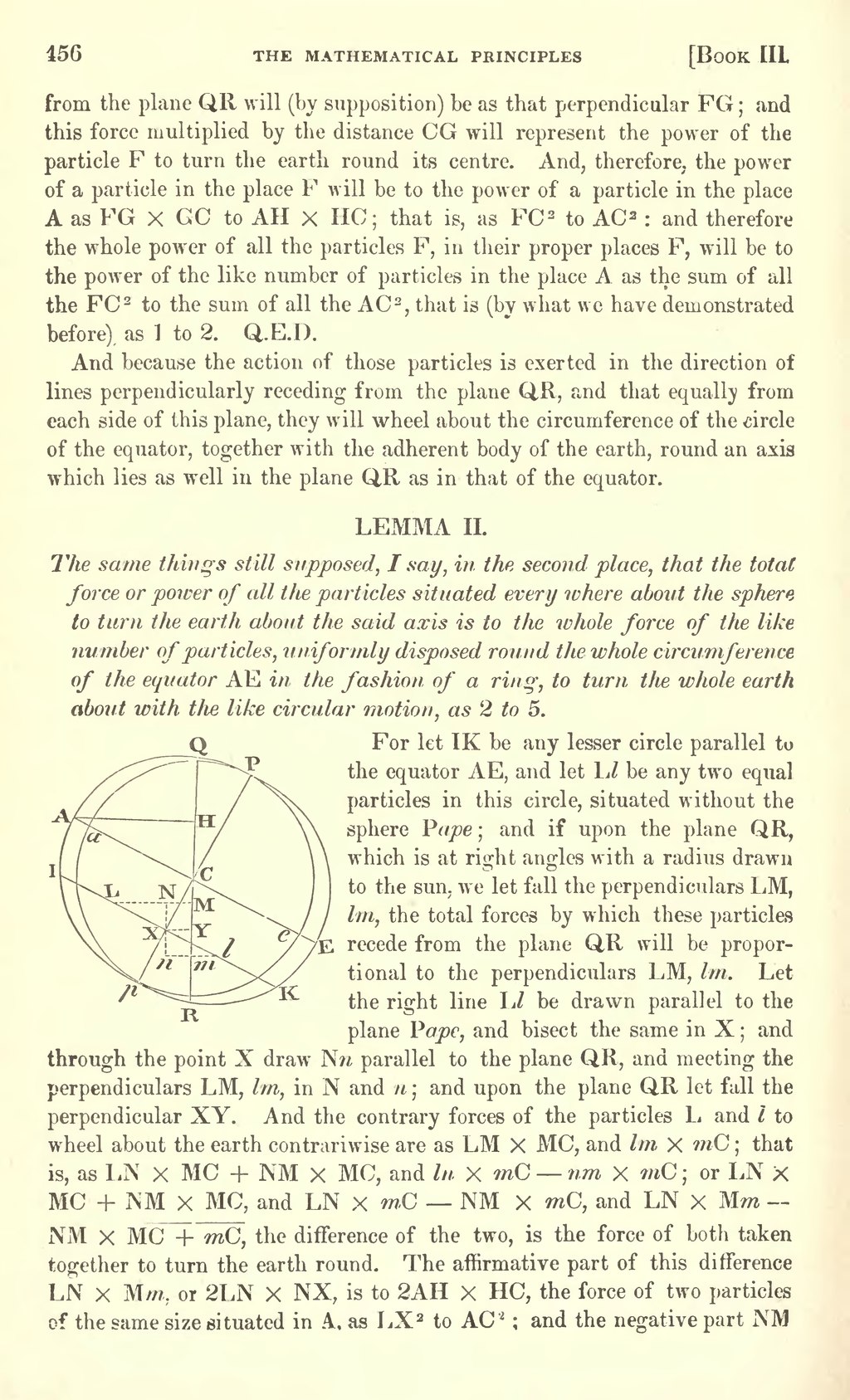from the plane QR will (by supposition) be as that perpendicular FG; and this force multiplied by the distance CG will represent the power of the particle F to turn the earth round its centre. And, therefore, the power of a particle in the place F will be to the power of a particle in the place A as FG GC to AH HC; that is, as FC² to AC²: and therefore the whole power of all the particles F, in their proper places F, will be to the power of the like number of particles in the place A as the sum of all the FC² to the sum of all the AC², that is (by what we have demonstrated before), as 1 to 2. Q.E.D.
And because the action of those particles is exerted in the direction of lines perpendicularly receding from the plane QR, and that equally from each side of this plane, they will wheel about the circumference of the circle of the equator, together with the adherent body of the earth, round an axis which lies as well in the plane QR as in that of the equator.
LEMMA II.
- The same things still supposed, I say, in the second place, that the total force or power of all the particles situated every where about the sphere to turn the earth about the said axis is to the whole force of the like number of particles, uniformly disposed round the whole circumference of the equator AE in the fashion of a ring, to turn the whole earth about with the like circular motion, as 2 to 5.

For let IK be any lesser circle parallel to the equator AE, and let Ll be any two equal particles in this circle, situated without the sphere Pape; and if upon the plane QR, which is at right angles with a radius drawn to the sun, we let fall the perpendiculars LM, lm, the total forces by which these particles recede from the plane QR will be proportional to the perpendiculars LM, lm. Let the right line Ll be drawn parallel to the plane Pape, and bisect the same in X; and through the point X draw Nn parallel to the plane QR, and meeting the perpendiculars LM, lm, in N and n; and upon the plane QR let full the perpendicular XY. And the contrary forces of the particles L and l to wheel about the earth contrariwise are as LM MC, and lm mC; that is, as LN MC + NM MC, and ln mC - nm mC; or LN MC + NM MC, and LN mC - NM mC, and LN Mm - NM , the difference of the two, is the force of both taken together to turn the earth round. The affirmative part of this difference LN Mm, or 2LN NX, is to 2AH HC, the force of two particles of the same size situated in A, as LX² to AC²; and the negative part NM


